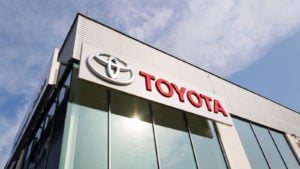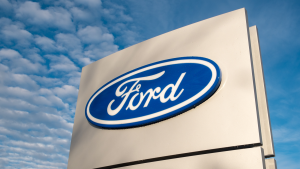Investors daydreaming of cruising smoothly down the stock market highway must concede that this has been a bumpy ride for car and truck manufacturers. The Dow Jones U.S. Auto Manufacturers Index has taken investors on a wild detour, plummeting nearly 35% year-to-date (YTD). Even the once shining star of the auto world, Tesla (NASDAQ:TSLA), has hit a speed bump — losing 38% of its value in just six months. It’s a tale of high interest rates and cooling demand for electric vehicles (EVs) leaving investors revving their engines, anticipating when the industry will shift back into high gear.
However, all hope is not lost. Good Car Bad Car’s latest automotive data reveals a silver lining in the clouds. The U.S. auto market saw a 4.5% year-over-year (YOY) growth in sales in the first quarter. Yet, it’s a tale of two cities, with imports hogging most of the growth. “We think that any manufacturer offering a strong lineup of PHEV and HEV vehicles, as well as ‘good, cheap, reliable’ EVs is set to reap the rewards of both the economy’s and automotive industry’s continued recovery and growth since 2020’s shutdowns,” Good Car Bad Car opined on April 1.
Following this optimistic outlook, let’s zoom in on three auto stocks that are set to rev into high gear for Q2 2024.
Hyundai Motor Company (HYMTF)

When it comes to finding an auto manufacturer that ticks all the boxes in 2024, look no further than the Hyundai Motor Company (OTCMKTS:HYMTF). The company’s North American division hit the gas pedal with record-breaking March sales of 76,920 units, marking a 2% increase from the previous year. The IONIQ 5 electric vehicle led the pack with a 58% sales surge, while the Tucson PHEV and Tucson HEV recorded growth rates of 62% and 48%, respectively.
Hyundai hit the accelerator to its best March ever. Randy Parker, CEO of Hyundai Motor America, expressed enthusiasm over the stellar Q1 sales results, highlighting the success of models like the Palisade, Kona, and IONIQ. The company’s fantastic 2023 performance is a cherry on top, with 4.22 million vehicles sold worldwide and an operating profit of 15.12 trillion South Korean won (USD $10.9 billion).
Toyota Motor (TM)

Toyota Motor (NYSE:TM) might be taking a leisurely drive into the EV space, but this cautious approach has paid off handsomely. By focusing on hybrids like the iconic Prius since 1997, Toyota has dodged the pitfalls that come with fully electric vehicles. While critics may decry its conservative stance, the numbers tell a different story.
Riding on its unique strategy, Toyota reported a nine-month operating income of 4.24 trillion Japanese yen (USD $27.41 billion) through March 31, more than double compared to the previous year. With total global vehicle sales reaching 7.91 million, Toyota saw electric vehicles account for 35.9% of its sales. Hybrid electric vehicles (HEVs) and plug-in hybrid electric vehicles (PHEVs) dominated the EV segment, representing 97% of Toyota’s electric vehicle sales.
Ford (F)

Considering a third Asian contender like Honda Motor (NYSE:HMC) had its allure, but I’ve shifted gears to one of the “Big Three” automakers: Ford (NYSE:F). Ford’s journey hit a rough patch in January when it downsized its workforce producing electric versions of its popular F-150 trucks. The company slashed its 2024 F-150 EV production in half, impacting 1,400 workers at the Rouge Electric Vehicle Center.
These maneuvers might puzzle some observers, but auto manufacturers, like Ford, aren’t running charity drives — profits fuel their engines. Ford’s decisions, albeit tough, are geared towards maximizing returns. By following in Toyota’s footsteps, Ford aims to strike a balance between current profits and future growth prospects.
Ford’s recent move to introduce a third shift at its Michigan assembly plant, which churns out Bronco and Ranger trucks, underscores its commitment to meeting the surging demand for traditional gas-powered vehicles. While some analysts speculate on CEO Jim Farley’s strategy, only time will reveal the fruits of his labor. Amidst the uncertainties, Farley steers Ford towards a path that promises gains for both current and prospective shareholders.